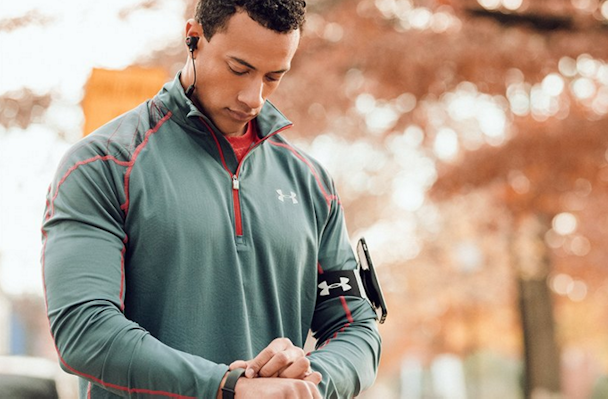'It's only going to get bigger' - How Under Armour is planning to revolutionize the connected fitness space with the rise of wearables
The success of Under Armour’s bid to win the connected fitness market will be predicated on its ability to build a holistic ecosystem of services rather than be bound to specific apps or products, according to one of its top marketers.

The brand isn’t trying to capitalize on one particular app or device. Instead, it is tackling connected fitness “in the broadest, most holistic way that we possibly can,” claimed head of North America media and advertising for connected fitness Doug Ziewacz.
Ahead of SXSW, where Ziewacz will be speaking on a panel about the matter, The Drum caught up with him to talk about why the brand is making such a big push into wearables and what he thinks is in store down the line.
Essentially, the brand wants to serve as a one-stop-shop for consumers who are looking for a place where all of their health and wellness data can come together and truly tell a comprehensive story.
Over the past three years, the sportswear retailer has dished out roughly $700 million to scoop up three fitness-tracking apps – MapMyFitness, Endomondo, and MyFitnessPal – in an effort to be seen as a leader in the connected fitness realm.
At CES earlier this year, the brand rolled out its $400 'Health Box,' which includes a scale, fitness tracker and heart rate monitor that can be synced up with its UA Record App. The retailer also debuted its 'Gemini 2 Record Equipped' running shoes last month, which come with a built-in chip that can track running metrics.
In an effort to bring this disparate data together and give users a holistic view of their health, Under Armour has also organized health into four core pillars on its UA Record app - daily activity (steps), fitness, sleep and nutrition – and users can go into as much or as little detail as they want when it comes to tracking and recording their data. For example, users can choose ‘light,’ ‘medium’ or ‘heavy’ on the UA Record app for their daily calorie consumption, but if they’d rather go into more detail, they can pull in individual meal data from ‘MyFitnessPal’ to see the exact number of calories consumed.
With 165 million users across its four apps, which are all part of what the brand calls an “open ecosystem” where consumers wearing a Fitbit or an Apple Watch can still connect their devices to Under Armour’s platforms, Ziewacz said Under Armour is just getting started.
“It’s only going to get bigger,” he said. “The next 10 years are going to be really, really exciting. We’re giving people more options in terms of how they collect their data and trying to make it seamless and thoughtless. As we move forward, as evidenced by the [Gemini] shoe, these things are going to be deeply, deeply integrated into fabric and all types of different devices and equipment. As we have envisioned, tracking your fitness is going to be as easy as pulling on a t-shirt and that’s sort of the idea as we move forward in the next two or three years.’
The company is also partnering with IBM Watson “to create and provide meaningful data-backed health and fitness insights,” according to a statement it released earlier this year.
"If you imagine as a consumer, now having the ability to get some sort of predictive analytics and artificial intelligence around [wearable tech], it creates a pretty amazing opportunity moving forward,” Ziewacz said.
In addition to collaborating with companies like IBM, Under Armour is also working with marketers who can leverage both the brand’s apps and its immense amount of data to “connect with the consumer at these emotional moments, or ‘point of sweat,’” according to Ziewacz.
For example, he said a CPG brand could challenge women to walk 20 times in 30 days for 20 minutes at a time, and could offer different prizes based off of what goals are met.
“What the brands are really receiving is they are connecting at a positive passion point and they’re offering something of value,” he said.
Ziewacz added that Under Armour is very specific about who it works with, since it only wants to partner “with brands that are going to help and aid us and support us in our mission of making these athletes better.”
Overall, Ziewacz is hopeful for the future and sees connected fitness as being a core aspect of the Under Armour brand.
“In my opinion, it’s one of the greatest digital transformation stories out there today,” he said of the retailer’s push into the space.

